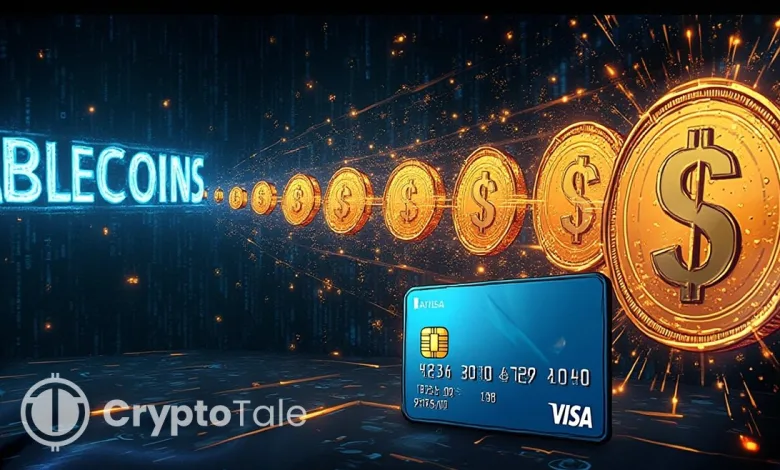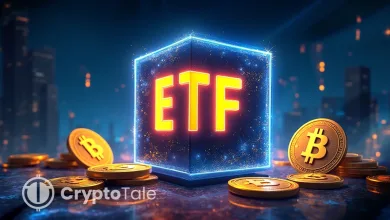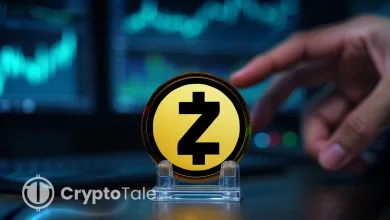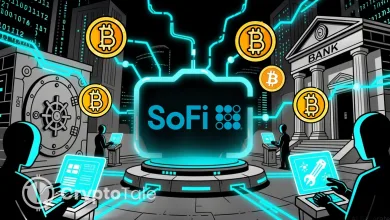Visa Evaluates USDC Payroll to Transform Global Payments

- Visa pilots USDC payments to simplify cross-border earnings for creators worldwide.
- Gig workers gain faster and more stable income with Visa’s blockchain settlement model.
- The hybrid fiat and crypto network signals a new era in global financial infrastructure.
Visa has rolled out a new pilot that uses USD Coin (USDC) to pay workers, creators, and freelancers across borders within minutes. The company announced the program at the Singapore Fintech Festival 2025, calling it one of its boldest steps yet in merging traditional finance with blockchain technology.
The test allows digital platforms such as TikTok and Uber to send stable, dollar-backed payments directly to users in developing markets. Instead of waiting days for traditional wire transfers, recipients can receive their earnings almost instantly through Visa Direct, the firm’s real-time payment network.
According to a Bloomberg report, Visa developed the system in partnership with Circle, the issuer of USDC, a stablecoin tied one-to-one to the U.S. dollar. The idea is to give workers in markets with weak banking systems or unstable currencies an easier way to access digital dollars without conversion fees or long delays.
Chris Newkirk, Visa’s President of Commercial and Money Movement Solutions, said the goal was simple: “to make access to money as fast and universal as the internet itself.” He noted that the pilot represents a practical step toward a world where payments move freely, without banks acting as gatekeepers.
Stablecoins Step Into the Mainstream
The payroll pilot marks a turning point for stablecoins, which have mostly been used for trading or settlements between institutions. By using USDC for day-to-day income payments, Visa is testing whether these tokens can serve as reliable tools for global commerce.
For digital platforms, the benefits are clear. Gig workers and online creators can now receive U.S.-denominated income without worrying about local currency swings or high remittance charges. Businesses also gain flexibility by using a digital token that moves across borders without touching the legacy banking system.
The latest Visa Creator Report has revealed that instant digital payments are the most preferred option for more than 50% of content creators compared to traditional transfers. For most of them, the possession of a stable digital dollar is crucial, as they reside in countries that have a hard time getting stable U.S. dollars. Thus, USDC becomes a suitable choice. Stablecoins can be kept, spent, or converted into local currency by the recipients, depending on the situation.
Visa said the new system offers three main advantages—faster settlements, consistent dollar value, and full on-chain transparency. Each transaction is recorded on the blockchain, giving both senders and recipients a verifiable payment record.
Related: Visa Expands Stablecoin Network Across Four Global Blockchains
Building a Hybrid Financial Network
Visa’s implementation of blockchain does not eliminate the company’s current payment rails; instead, it broadens their use. The corporation is adding the stablecoin capability to Visa Direct, thus establishing a link between orthodox finance and Web3 infrastructure.
This mixed arrangement reflects the global transformation of the financial sector, in which payment powerhouses are already accommodating blockchain technology for the world’s real business. On the other hand, Visa’s project still requires regulatory approval.
Clear rules on stablecoin reserves, licensing, and redemption rights are still being defined in many jurisdictions. Analysts note that Visa’s program is as much about understanding the technology’s limits as it is about immediate adoption.
Even so, the scale of Visa’s network gives the pilot unique weight. If it succeeds, it could reshape how multinational companies pay remote employees and creators—faster, cheaper, and without borders.





